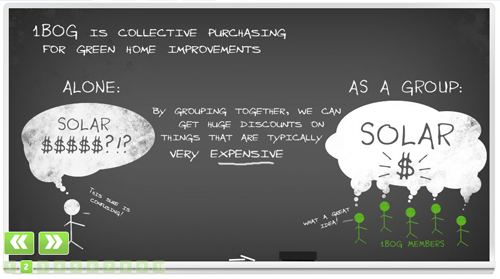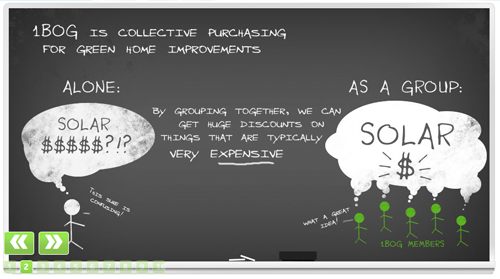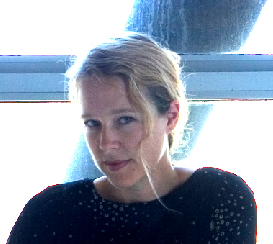I've been writing here on Shareable about how to get neighborhoods organized for sharing, and one big reason to do so is the money neighbors can save when they operate in tandem as a group. Neighbors are de facto groups, connected by proximity, and often with shared goals, values, and experiences. When they're organized with intention, neighbors can start to utilize group economic techniques, and save big.
Here’s why… If you’re in a group you’ve got access to economic power. You can negotiate a discount with a merchant, you can barter, you can resource-share, and more. Here’s a simple example: Do you live on a cul-de-sac? You are one in a group of neighbors, with 5 houses, 5 yards… and 5 lawnmowers between you. All you really need is one lawnmower, a scheduling tool and the willingness to share.
Until very recently our groups have been locked; they’ve been economically dormant. We haven’t had the tools, or the incentives, to unlock their economic power. But this is changing. As resource-sharing ideas take off, we’re starting to be able to “unlock” groups. We’re starting to have the tools we need to tap into our groups to save — and even make — money. This is the basic idea behind what I call the third economy.
A tech startup called Groupon is leading the way. Groupon helps people in cities tap into their collective buying power by offering discounts to groups. Joining a group is easy, you simply add your name and credit card info to a list. Once there are enough members in your group, you all “buy” the product or service at a discount. Some say collective buying is the next big thing in Silicon Valley, and the 5 or 6 startups doing similar things may prove it.
Facilitating group discounts for individuals who don’t know one another is great, especially during our protracted recession. But wouldn’t it be even better if the concept was applied at a community level, rather than anonymously? After all, the more localized, direct and interactive group economics is, the more long-term value it will bring to those who participate. (Read Small is Beautiful: Economics as if People Mattered for more on this theory…).

Another tech startup 1BOG might have the right idea. It helps neighbors organize into groups to negotiate favorable deals from solar panel suppliers, installers and financiers. 1BOG has helped nearly 600 neighbors, in neighborhoods across America, add solar power to their homes. And this concept is just scratching the surface. Imagine the many other home improvements that would benefit from this model.
Here are a few more ways to tap into the economic power of groups. Use these techniques in your neighborhoods to save money, and build community along the way. You'll notice that most are still in a ‘low-tech’ stage of development, meaning you’ll need to tackle organization and record-keeping without much online help. Let’s hope this changes soon (a hint to you tech entrepreneurs out there…).
Collective Buying
Set up a wholesale food buying club. Buying clubs can be as simple as teaming up with neighbors on a Costco run and divvying up the spoils. Or you can join existing clubs that buy from wholesale distributors. Check these guys out for inspiration.
Much gratitude to a developer in Oregon who’s created free software spreadsheets to help get your neighborhood club set up and organized.
Produce-sharing CSAs are also buying clubs of a sort. Or buy a cow and share.
Buying to Share
Buy to share techniques save you money, and they also help us all to buy fewer products, which benefits the earth. Come together with neighbors and purchase a lawnmower, snowblower, or other home or lawn care item. Even better, share an existing one. This technique also works great for household items like vacuum cleaners, and recreational equipment like skis and tennis raquets. Or, in a slightly more extreme version, share buy a used car, truck, RV or motorcycle.
These examples, while relatively simple, require you to be well-organized as a group. Remember to identify one group member who will handle the financial transaction (collecting money from neighbors, purchasing the product). Also write up a short agreement on how to handle problems that arise (what happens when stuff breaks?). More tips here. You may also want to set up a sharing calendar so everyone in the group knows where the product being shared is, and can sign up to use it.
Another great way to save money and build community is to collectively buy or build a small shelter (a yurt, tipi, shed) for collective use. Or a pizza oven, outdoor theater or hot tub. These amenities, when shared, bring a neighborhood together in a positive way with benefits that go well beyond saving money.
Sharing Services
Another great way to build community while saving money is to share services. Ask a nanny, childcare provider, yoga instructor, landscaper or salsa dancing teacher if they’d be willing to give you and your neighbors a group discount.
Come up with your own creative ways to tap into group power? Let us know in the comments below…









